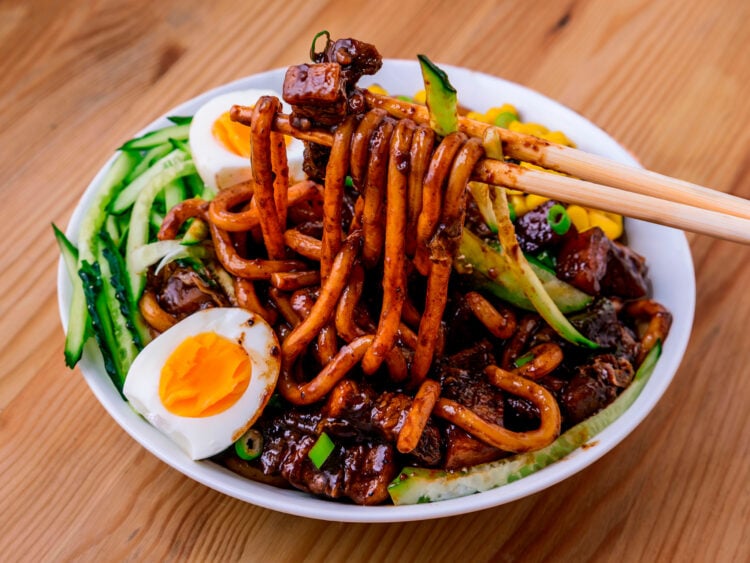The authentic recipe for Korea’s famous black bean sauce noodles
Jajangmyeon (자장면), also spelled Jjajangmyeon (짜장면), is an iconic dish of Korean cuisine that often appears at the heart of memorable K-drama scenes, linking characters at key moments—from touching reconciliations to hopeful first meetings.
This rich, savory bowl isn’t just delicious; it embodies the emotions and stories woven into the fabric of Korean culture.
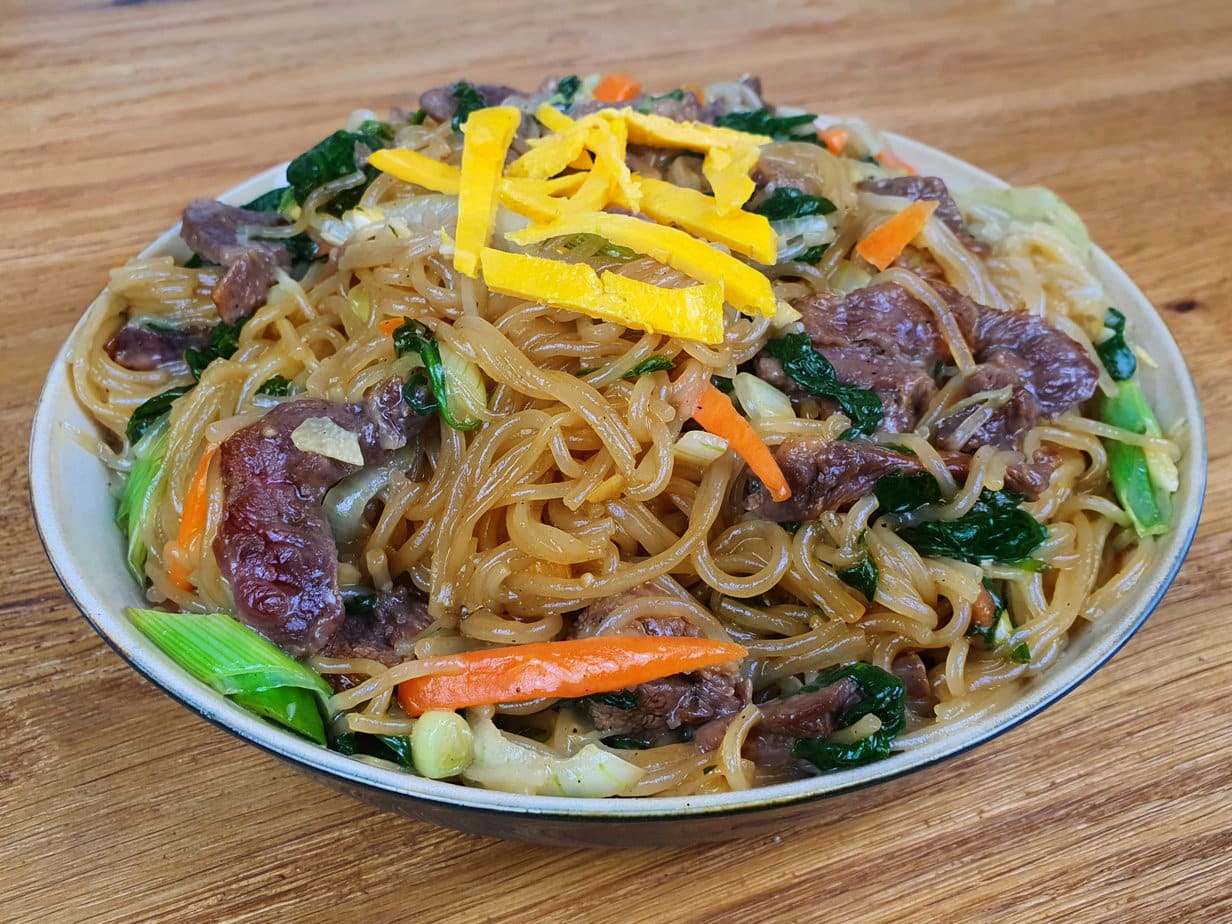
What is Jajangmyeon?
It’s a hugely popular noodle dish topped with a savory black bean sauce. The sauce is made with chunjang (춘장, a salty black soybean paste), diced pork (or another meat), and vegetables. It famously rivals Jjamppong, and Koreans are split on which is better.

Unlike Japchae, which is meant to be light, this dish leans into indulgence and comfort. You’ll find it all over Korea, especially in Korean-Chinese restaurants. Why? Let me explain.
Chinese Origins
The first recorded jajangmyeon was served in 1905 at a restaurant called Gonghwachun (공화춘) in Incheon’s Chinatown. Introduced by Chinese merchants, its flavor evolved over time to suit Korean tastes. The dish traces back to the Chinese Zha Jiang Mian, which uses nearly the same ingredients—adapted, of course, to Chinese palates.
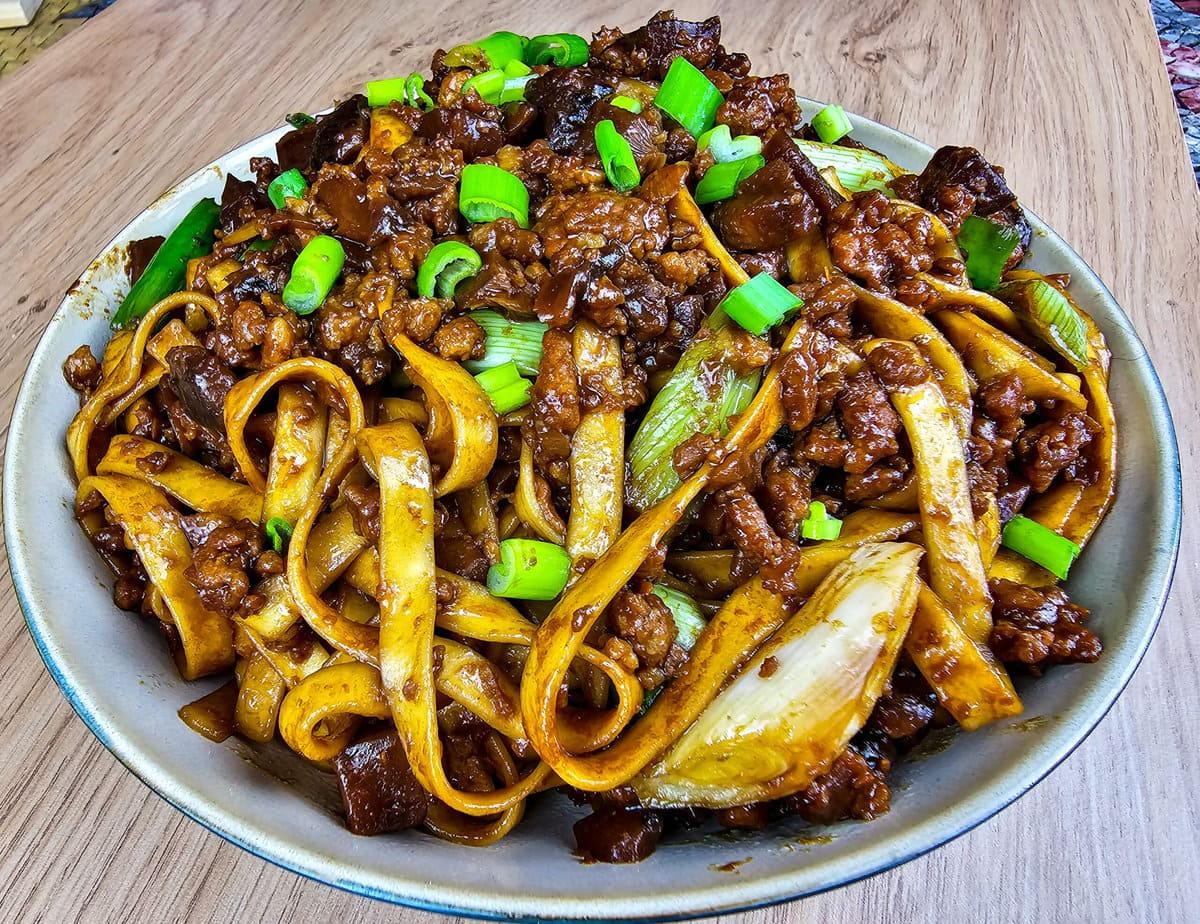
What is Korean Black Day?
April 14—Korean Black Day—shouldn’t be confused with America’s Black Friday shopping frenzy. In Korea, the date is set aside for singles who, having received no gifts on Valentine’s Day (February 14) or White Day (March 14), find comfort in gathering to enjoy jajangmyeon.
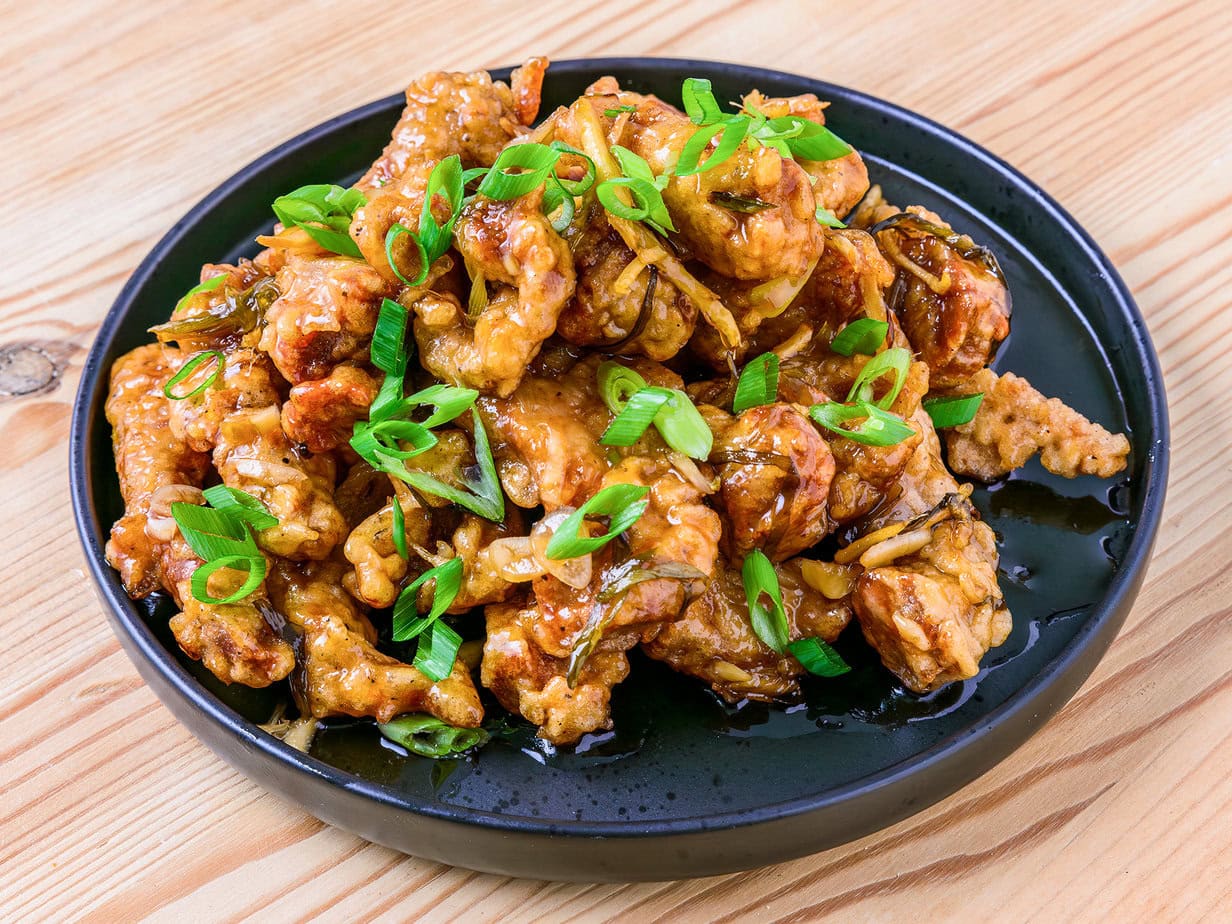
Picture this: while some fight over the last TV on sale, our Korean friends gather around a comforting bowl, sharing not discount coupons but matters of the heart—and maybe a few tears… of laughter!
It’s a delicious way to celebrate being single, a reminder that not everything in life is as dark as the sauce on these noodles.
The main ingredients for jajangmyeon
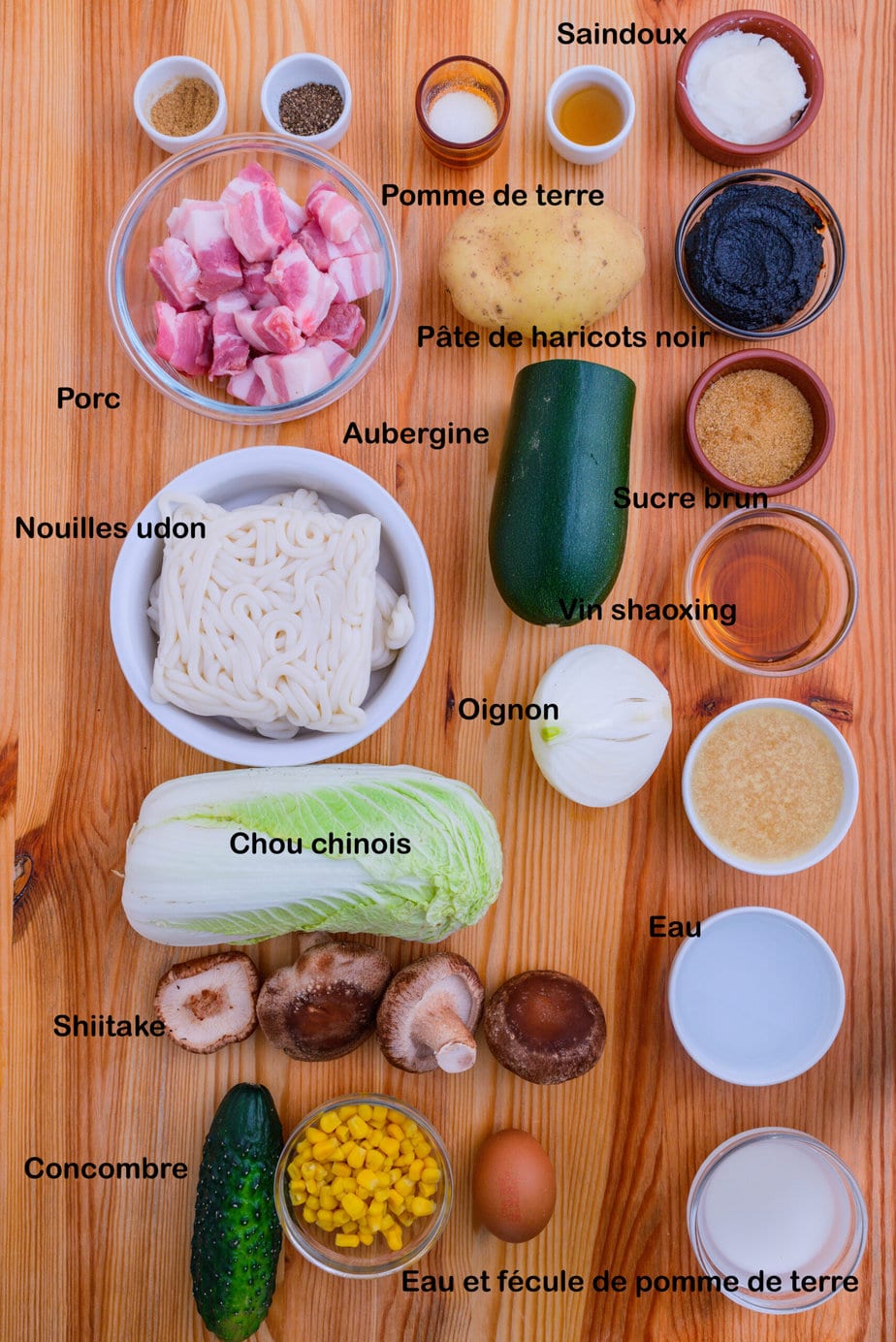
Udon noodles: The base of the dish, offering a soft, springy chew; a staple of Asian cuisine.
Korean black bean paste (Chunjang): The backbone of the sauce, prized for its deep, savory umami.
Shaoxing wine: A rice wine used to marinate the pork and season the sauce; it lends richness and gentle acidity.
Shiitake mushrooms: Add meaty texture and umami, deepening the sauce’s flavor.
Chinese cabbage: Adds crunch and natural sweetness, balancing the sauce’s richness.
Pork belly: A flavorful, well-marbled cut whose fat renders to make the sauce rich and silky.
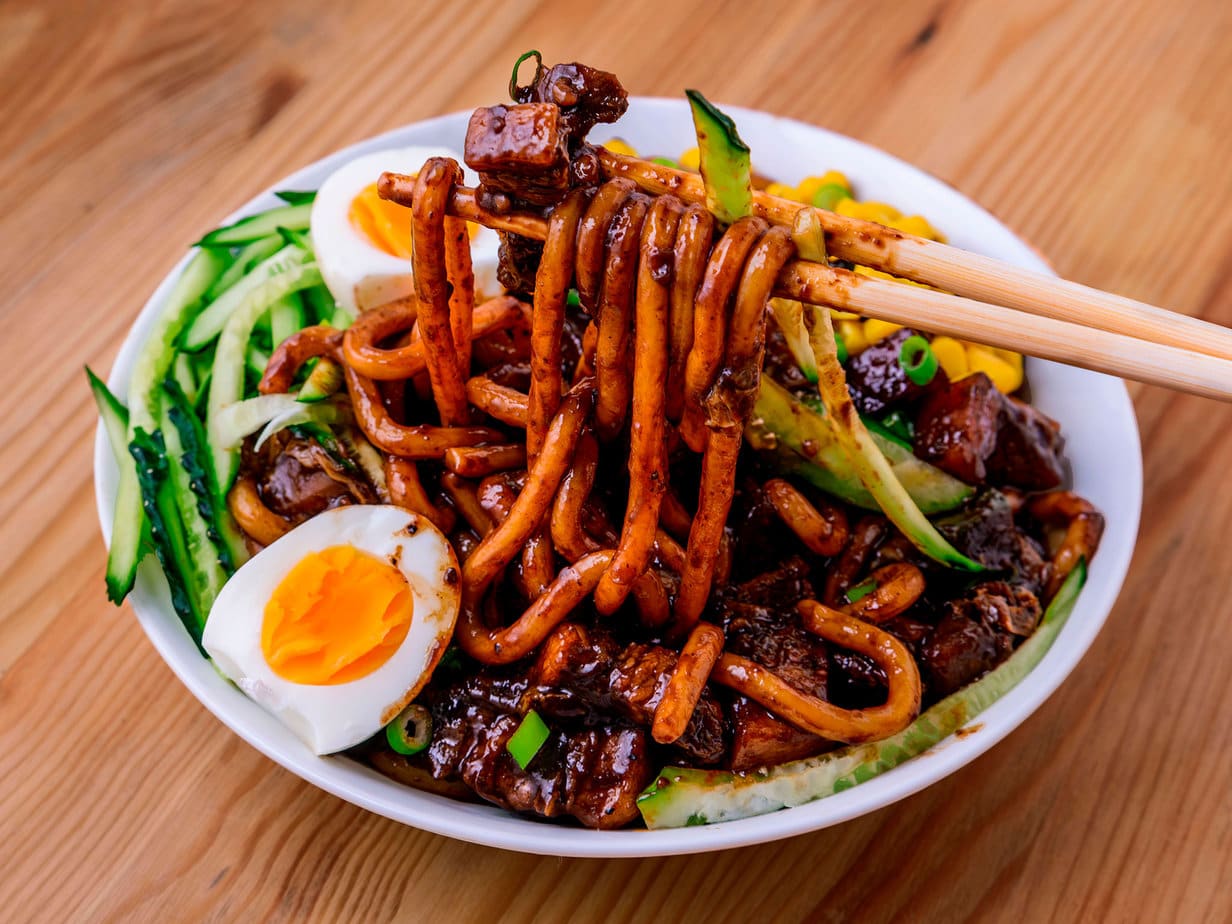
Equipment
Ingredients
- 500 g jajangmyeon noodles or precooked udon
- 0.5 medium onion finely diced
- 0.5 zucchini finely diced
- 1 large potato finely diced
- 4 fresh shiitake mushrooms thinly sliced
- 0.25 small Napa cabbage cut into bite-size pieces
- 300 g pork belly unsalted, diced
Pork Marinade
- 0.5 tablespoon Shaoxing wine
- 2.5 pinches salt
- 2.5 pinches ground black pepper
- 1 pinch ground ginger
Homemade Jajang Sauce
- 3 tablespoons Korean black bean paste Chunjang
- 45 g lard
- 1 tablespoon brown sugar
- 2 tablespoons Shaoxing wine
- 120 ml chicken stock
- 120 ml water
- 2 tablespoons potato starch plus an equal amount of water mixed
Toppings
- 0.5 cucumber julienned
- green peas or sweet corn canned, optional
- hard-boiled egg optional
Instructions
- Rinse the pork under cold water and pat dry with paper towels.

- Add the marinade ingredients to the pork. Mix well and let it rest for 15 minutes.
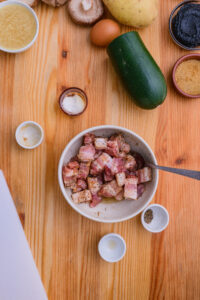
- Heat a wok until hot. Add the lard and let it melt.
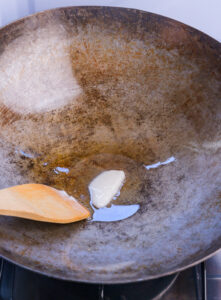
- Add the black bean paste and stir constantly over medium heat for 3 to 5 minutes.
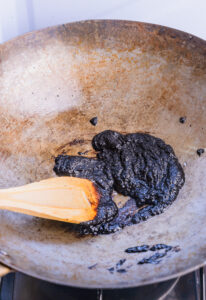
- Add the brown sugar and stir for 2 to 3 minutes.
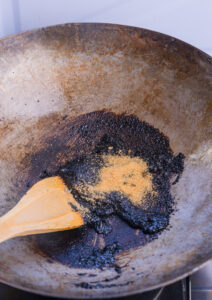
- Remove the black bean paste (leave the fat in the wok) and set aside. Keep the oil in the wok for the next step, and keep the wok hot.
- Add the pork to the wok and stir-fry until half cooked.
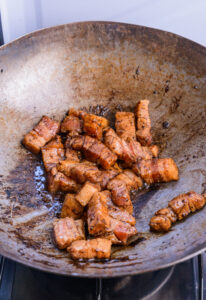
- Add the onion, zucchini, and potato; stir-fry for 3 to 5 minutes, until about one-third cooked.
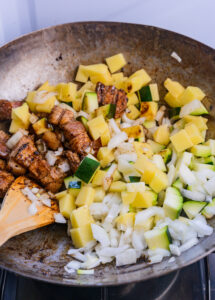
- Add the mushrooms and cabbage; stir-fry for 2 to 3 minutes.
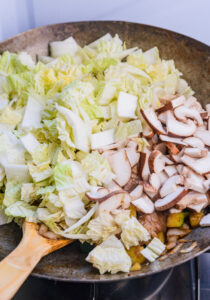
- Stir the cooked black bean paste back into the wok and combine with the vegetables. Cook, stirring, for 1 to 2 minutes.
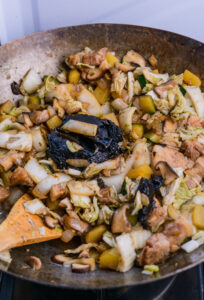
- Add the chicken stock, water, and Shaoxing wine. Simmer over medium heat for 5 to 7 minutes. (Cover the wok with a lid, if possible, to speed up cooking.)
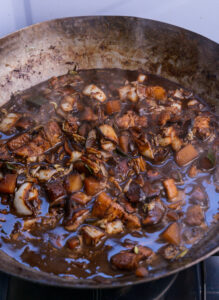
- Meanwhile, bring a pot of water to a boil. Add the noodles and cook for 3 to 5 minutes.
- Rinse the noodles under cold water and drain. Place them in a bowl.
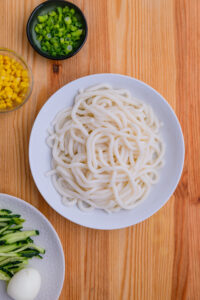
- Add the starch-and-water slurry to the wok, then stir. (This will thicken the sauce and is the final step in making the black bean sauce.)
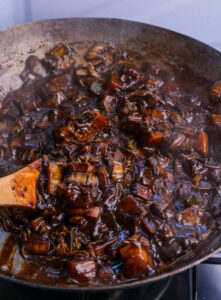
- Spoon the black bean sauce over the noodles. Serve as is or garnish with cucumber slices, green peas, sweet corn, or a hard-boiled egg.
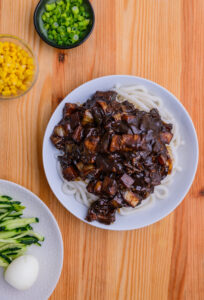
- Mix the sauce and noodles well with chopsticks.
